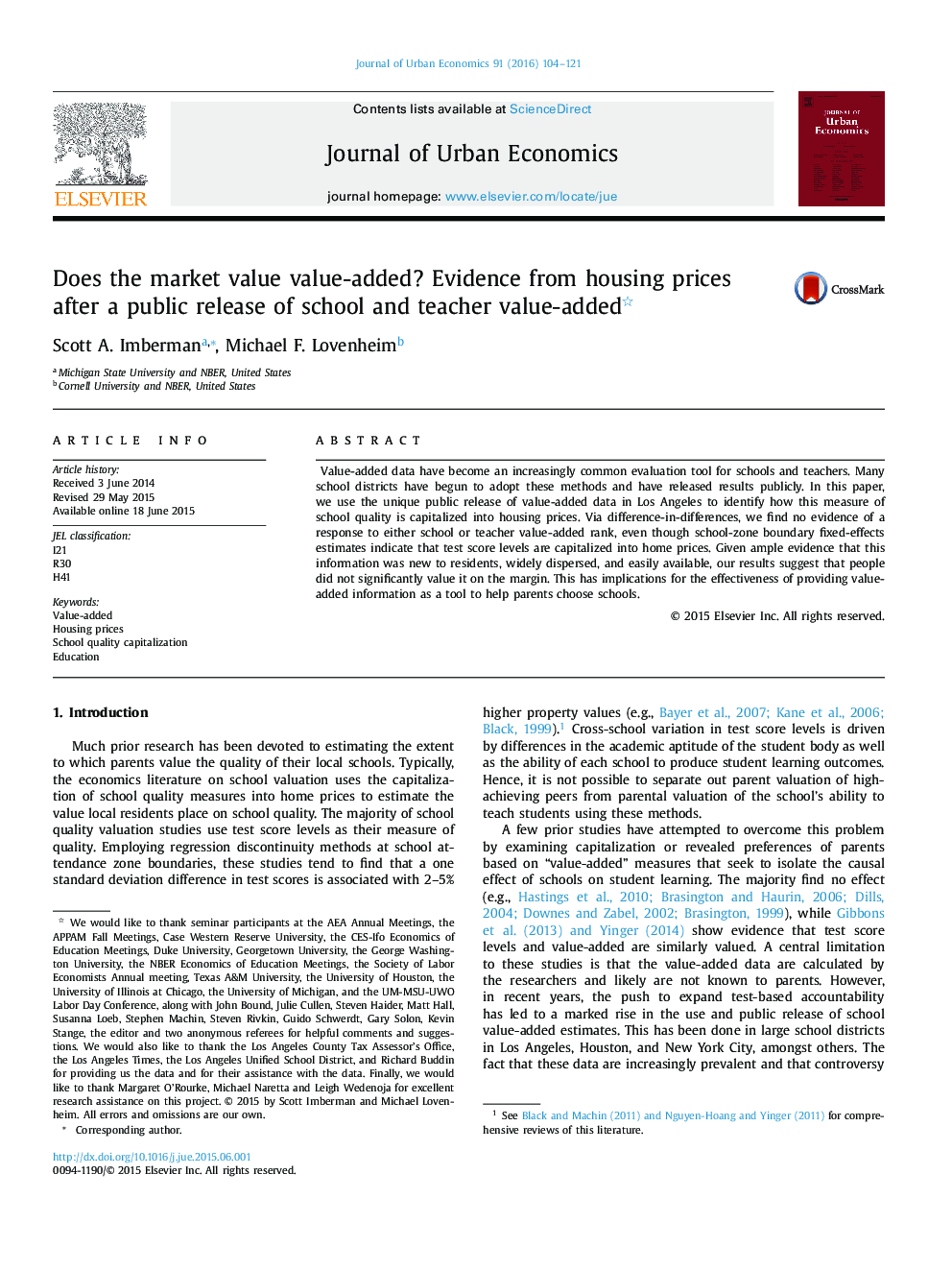| Article ID | Journal | Published Year | Pages | File Type |
|---|---|---|---|---|
| 971055 | Journal of Urban Economics | 2016 | 18 Pages |
Value-added data have become an increasingly common evaluation tool for schools and teachers. Many school districts have begun to adopt these methods and have released results publicly. In this paper, we use the unique public release of value-added data in Los Angeles to identify how this measure of school quality is capitalized into housing prices. Via difference-in-differences, we find no evidence of a response to either school or teacher value-added rank, even though school-zone boundary fixed-effects estimates indicate that test score levels are capitalized into home prices. Given ample evidence that this information was new to residents, widely dispersed, and easily available, our results suggest that people did not significantly value it on the margin. This has implications for the effectiveness of providing value-added information as a tool to help parents choose schools.
